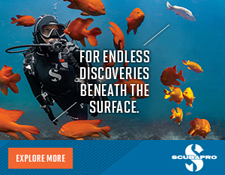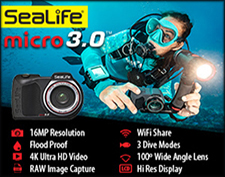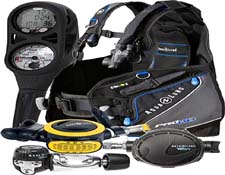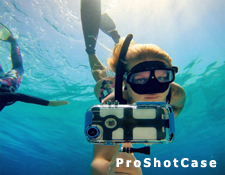

|


|
 |
 |
 |
 |
 |
 |
 |
 |



|
Diving in Hawaii There is a whirlwind of scuba diving options to explore while visiting Hawaii. From cage diving with great white sharks to accomplishing underwater spelunking in sparkling grottos, Hawaii has it all. The marine life is well protected here, so you can always expect an abundance of wildlife. There are literally hundreds of dive operators scattered across the archipelago. Many of the most popular dive sites can be reached from Honolulu, the capital city, though each island is home to plenty of options to choose from. Each dive shop has its own flair, and offers many different varieties of dives. Hawaii is a great place to achieve specialty certifications, especially for wreck and night diving. Area Found far out in the Pacific Ocean, pretty Hawaii’s archipelago spreads itself across 1,500 mi (2,400 km). The United States’ most recent addition is an idyllic getaway, a paradise to escape the cold winters found throughout the country. Hawaii became a state in 1959 after a long and arduous history. People have lived on these islands for hundreds if not thousands of years, and they continue to do so in comfort. Today, those whose native born families date back generations coexist easily with mainlanders who shipped over in a more recent era. Five massive volcanoes make up the five main islands of Hawaii. The lava flows freely here, and Kilauea is widely considered the world’s most active volcano. Come to see the expanse of lava fields and bubbling magma as it drops into the raging seas. Other attractions From sea kayaking on still, cool waters to exploring historical museums on the mainland, there is an endless supply of entertainment to indulge in during your stay in Hawaii. Surf the massive waves and dine in the traditional island style, relishing in the tropical sun and warm breezes. Getting there Getting to Hawaii is a breeze, though travel to the islands rarely comes cheaply. Honolulu International Airport is the main international gateway, with Kahului Airport on Maui, Kona International Airport on the Big Island, and Lihue Airport on Kauai receiving both international and interisland flights.Flights routinely leave from Los Angeles, offering the best deals. Best dive sites in Hawaii O’ahu – The wrecks of the YO-257 and the San Pedro run parallel approximately 36 metres/120 feet apart. The Atlantis Submarine often visits and divers can interact with submarine passengers. The Sea Tiger, off Waikiki, is reputed to be a former smuggling vessel. She rests in 36 metres/120 feet of water and divers often see spotted eagle rays, puffer fish and frog fish, with green sea turtles also making an appearance. Summer’s calmer surf opens up famous North Shore dive sites such as Shark’s Cove and Three Tables to divers. There are also many other shore dives on O’ahu. The most popular include Makaha Caverns and Electric Beach. Maui – Black Rock is one of the most popular dives here but many hotels along the Ka’anapali coast have great house reefs. With eagle rays, turtles and schooling fish, they're great for taking photos. Keep an eye out for Hawaii’s state fish –the humahumanukanuka'apua'a, also known as the Lagoon Triggerfish. Molokini Crater is just a 30-minute boat ride from Maui. Many species of fish, eels, and the occasional manta ray inhabit the crater’s interior, which is a marine protected area. Molokini’s backside has deeper water and occasionally strong current attracts larger pelagic animals like mantas, sharks or whales. There are several fun wrecks off Maui. Two of the most popular are the St. Anthony (located off of Kihei) and the 30-metre/100-foot long Carthaginian, just south of Lahaina. Both wrecks were sunk as artificial reefs and have become home to green sea turtles, schools of damselfish, surgeonfish, goatfish and butterfly fish. Lana’i – Lana’i is known for its superior visibility and cavern diving. Cathedrals I and II are the most popular sites and your boat charter will likely take you to one of them. Plus, if you love to find new fish or see rare invertebrates, Lana’i is your place. While it's possible to stay on Lana'i, most dive charters depart from Lahaina, Maui. The crossing takes 30-45 minutes and, during winter months, you’ll likely see humpback whales. Moloka’i – Moloka’i offers a rare opportunity to visit pristine sites and spot rare animals. Most of these drift dives range from 18-36 metres/60-120 feet in depth. Popular dives include Fish Bowl, Deep Corner and Fish Rain. Most offer shallow and deep sections with plentiful sea life and the chance to see larger pelagics, such as hammerhead sharks, and rare Hawaiian Monk Seals are known to make appearances. Hawai’i – Some describe the manta ray night dive off Kona as otherworldly because nothing compares to kneeling in black water while giant manta rays soar above your head. It’s serene, beautiful and gets your pulse pounding all at the same time. Once you’ve checked your manta ray dive off the list, take in some of the Big Island’s more than 50 dive sites. Famous for underwater lava formations, the Big Island also features turtles, a variety of eels and many endemic Hawaiian fish. Divers with relevant experience may be interested in a pelagic blackwater dive featuring mysterious deepwater creatures that swim up from the depths at night. Top shore diving spots include Two Step, Honokohau Harbor, Mile Marker 4, Old Airport, Kamakahonu Beach and Keauhou. Kaua’i – Divers can access the south shore year-round by boat and take in some great dive sites. A collapsed v-shaped lava tube, Sheraton Caverns, is home to many Hawaiian green sea turtles. At Turtle Bluffs, you drift along and see sand caves along with white-tip reef sharks and turtle cleaning stations. Koloa Landing, home to the dragon moray eel, is one of the best shore diving spots. It offers easy access and you can dive it nearly year round. Prince Kuhio’s is another great spot that offers an abundant supply of Hawaiian green sea turtles that aren’t afraid to have their pictures taken. You can only dive Anini Beach during summer months but it offers great reefs and abundant marine life all at a maximum depth of 14 metres/45 feet. Tunnels Beach gets its name from a series of collapsed lava tubes both on the inner and outer reefs. Known for geologic structure, turtle cleaning stations, octopus and even white-tip sharks, this site doesn’t fail to impress. Source: PADI









|